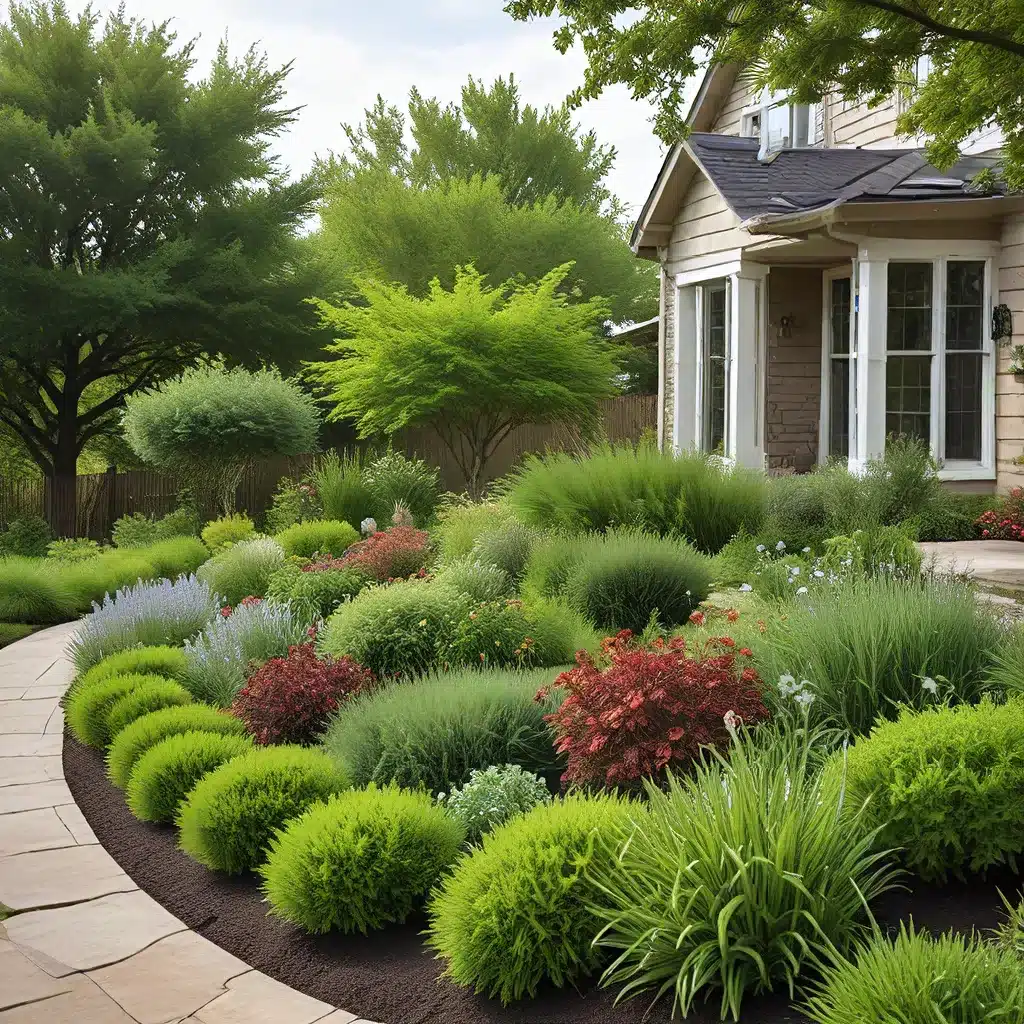
As an energy-conscious homeowner, I’m always on the lookout for ways to reduce my carbon footprint and save on utility bills. One area that often gets overlooked is the impact of our landscaping choices. But let me tell you, the right sustainable landscaping practices can make a significant difference in your home’s overall energy efficiency.
The Power of Passive Solar Landscaping
When it comes to energy-efficient home design, passive solar is where it’s at. By strategically planning the placement of trees, shrubs, and other landscaping elements, you can harness the power of the sun to heat and cool your home naturally.
Imagine this: you’ve got a south-facing wall that’s absorbing the sun’s rays all day long, causing your air conditioning to work overtime. But what if you planted a row of deciduous trees in front of that wall? In the summer, the leaves would provide shading and block the sun, keeping your home cooler. Then, in the winter, the bare trees would allow the warmth of the sun to reach your walls, reducing your heating needs.
It’s like having Mother Nature as your own personal HVAC system! And the best part? Passive solar landscaping doesn’t require any fancy technology or expensive equipment – just a bit of forethought and some strategic planting.
The Cooling Power of Landscaping
But it’s not just about heating your home – landscaping can also play a big role in cooling your home and reducing your energy consumption. Think about it – a well-placed tree or shrub can provide shade and block the sun’s rays from hitting your windows, walls, and roof. This can significantly reduce the amount of heat that’s absorbed by your home, leading to lower cooling costs.
And let’s not forget about the power of evapotranspiration. When plants release moisture through their leaves, it creates a cooling effect, just like the way sweat cools your skin on a hot day. By incorporating water-wise plants and strategically placing them around your home, you can create a natural, energy-efficient cooling system.
The Importance of Microclimate Management
But sustainable landscaping is about more than just passive solar and cooling – it’s also about understanding and managing the microclimate around your home. By paying attention to factors like wind patterns, sun exposure, and soil conditions, you can create a tailored landscape that optimizes your home’s energy efficiency.
For example, let’s say you live in a windy area. Planting a windbreak of tall trees or shrubs on the windward side of your home can help shield it from those gusts, reducing the amount of energy needed to heat or cool your space. Or maybe your home is situated in a sunny spot – in that case, you might want to consider incorporating green roofs or living walls to help insulate your home and reduce heat absorption.
Sustainable Materials and Practices
Of course, sustainable landscaping isn’t just about the plants and their placement – it’s also about the materials and practices you use. When it comes to hardscaping, look for options like permeable pavers or decomposed granite that allow water to soak into the ground rather than running off and contributing to stormwater issues.
And when it comes to maintenance, I’m all about water-wise and low-maintenance approaches. Drought-tolerant plants, drip irrigation, and smart watering systems can help you reduce your water consumption and, in turn, your energy usage (since a lot of energy goes into pumping and treating water).
Financing and Incentives for Sustainable Landscaping
I know what you’re thinking – “This all sounds great, but how much is it going to cost me?” Well, the good news is that there are a variety of financing options and incentives available to help energy-conscious homeowners like you make the switch to sustainable landscaping.
Many utility companies offer rebates or discounts for things like energy-efficient landscaping, rainwater harvesting systems, and solar-powered irrigation. And don’t forget about federal, state, and local tax credits and incentives that can help offset the initial investment.
Plus, when you factor in the long-term energy savings and the increased resale value of your home, sustainable landscaping can actually be a smart financial decision. It’s a win-win-win for your wallet, the environment, and your overall quality of life.
Embracing the Future of Sustainable Landscaping
As an energy-conscious homeowner, I’m proud to be part of a growing movement that’s embracing the power of sustainable landscaping. It’s not just about saving money on utility bills – it’s about creating a more eco-friendly, comfortable, and resilient home environment for ourselves and future generations.
Sure, it might take a bit of planning and some initial investment, but trust me, the payoff is well worth it. And who knows, maybe someday we’ll be able to power our homes entirely with the energy-saving magic of our own carefully curated landscapes.
So, my fellow energy-conscious homeowners, let’s explore the possibilities and unleash the full potential of our outdoor spaces. With a little creativity and a whole lot of sustainability, we can transform our homes into true oases of energy efficiency. The future is green, and it starts right here in our own backyards.

